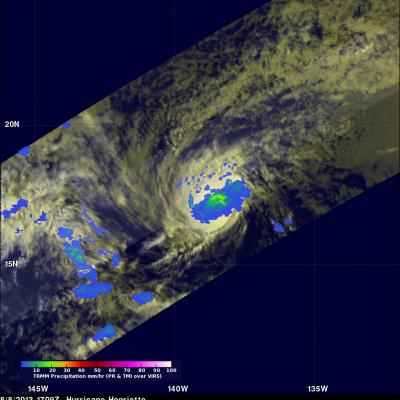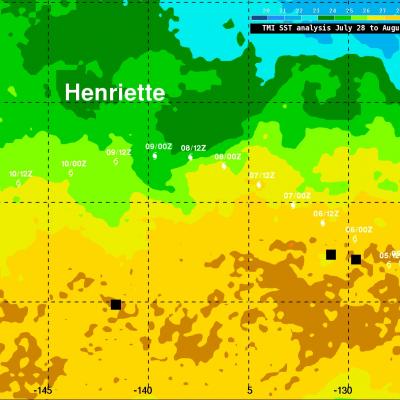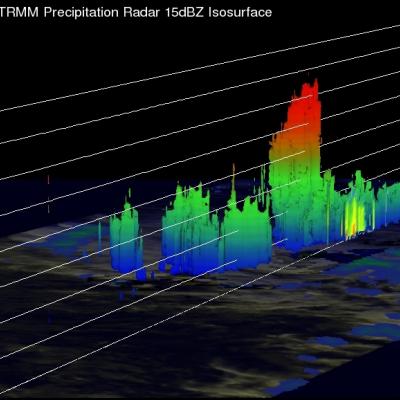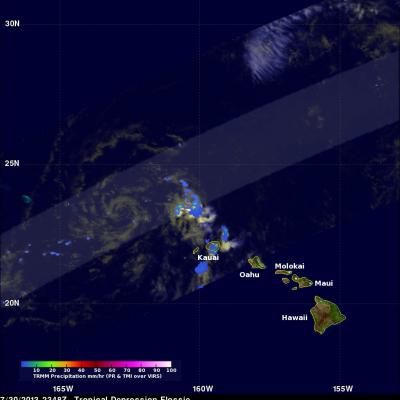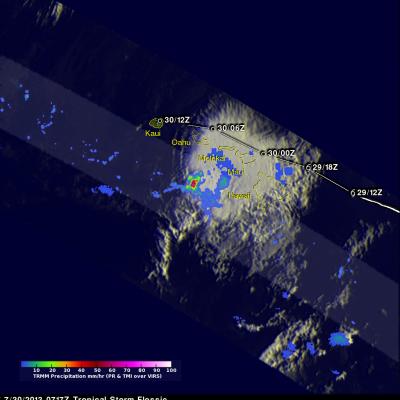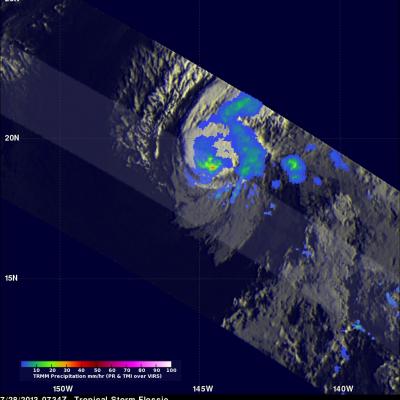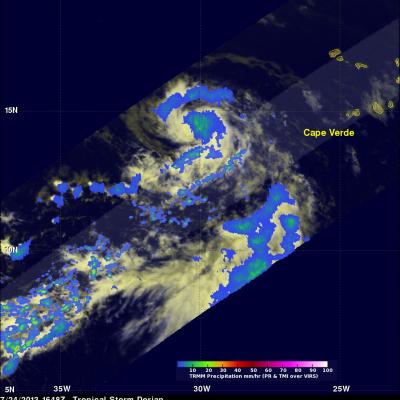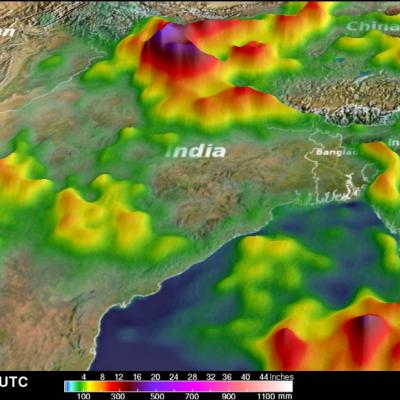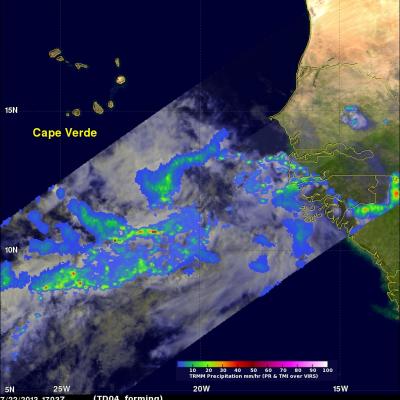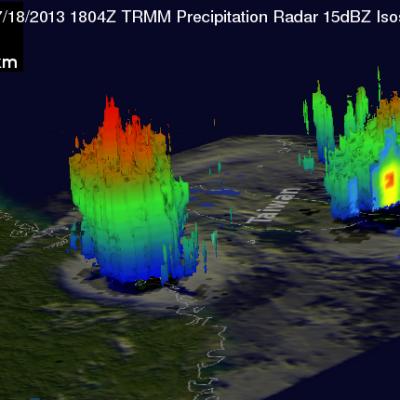Hurricane Henriette Still Strong
The TRMM satellite saw hurricane Henriette again on August 8, 2013 at 1709UTC (~8:09 AM Local Time). Henriette is predicted to start weakening tomorrow but with this TRMM pass the hurricane's eye could still be easily found on the TRMM visible (VIRS) image on the left. Henriette was small but TRMM's Microwave Imager (TMI) and Precipitation Radar (PR) showed that moderate to heavy rainfall was occurring in an area around the center of the hurricane.


